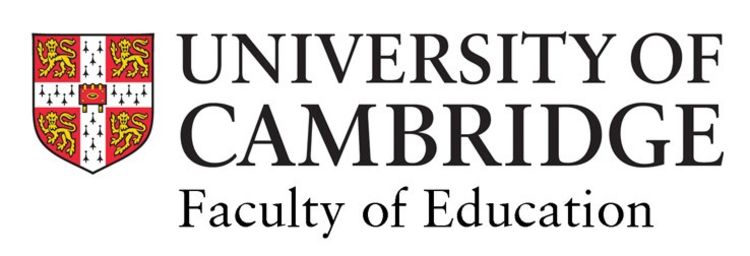

Cultivating ‘multilingual identities’ in schools could help reverse national crisis in language-learning

More young people may choose to study foreign languages to GCSE if they are encouraged to ‘identify’ with languages at school, rather than just learning vocabulary and grammar, new research suggests.
The University of Cambridge study found that pupils who learn about the value of languages, how languages shape personal identity, and their impact on social cohesion, feel much more positive about subjects like French, German and Spanish; compared with those who only learn the speaking and writing skills prescribed by the national curriculum.
Researchers conducted a trial with 270 pupils at four English secondary schools over a full academic year. While all the pupils received traditional language lessons, some also participated in activities which explored the value of multilingualism and its significance in their own communities and lives. Pupils who were exposed to this extended programme showed significantly more belief in their ability to learn a language, and were up to 35% more likely to express positive sentiments about studying languages, by the end of the year.
The researchers argue that encouraging young people to form ‘multilingual identities’ could help to reverse the national crisis in language learning. According to the British Council’s annual Language Trends survey, only 51% of pupils opt to study a foreign language to GCSE: far off the Government’s Ebacc target of 75% of pupils by 2022.
"Language education needs to be about more than just vocab and verbs"
Dr Linda Fisher
Dr Karen Forbes, from the Faculty of Education, University of Cambridge, said: “Young people in England often wonder why they should study languages given that English is used internationally. The answer they usually get is that it might be useful in the future, which is a pretty unpersuasive argument when you’re 14. We found that if we encourage them to reflect on how languages relate to them personally, they are much more likely to respond positively to language learning. This seems crucial if we want to reverse the decline in these subjects.”
The trial used downloadable materials developed by the University of Cambridge-based ‘We Are Multilingual’ project, which aims to encourage young people both to value multilingualism, and to appreciate that everyone uses more than one ‘language’ in the broadest sense.
Dr Linda Fisher, University Reader in Languages Education, said: “Everyone depends on a repertoire of communication, whether that involves a second language, a particular dialect, non-verbal signs, or something like computer code. Helping young people to realise that is key to showing them that they can ‘do’ languages. Language education needs to be about more than just vocab and verbs.”
The pupils were in Year 9 (ages 13 to 14): the final year of compulsory language education before they choose subjects for GCSE. They were drawn from four very different schools in London and the East of England.
Participants were split into three groups. A control group continued with their regular lessons in French, German or Spanish; while two intervention groups took six, one-hour modules exploring multilingualism over the course of the year. These covered topics such as ‘Why learn languages?’, different types of language and dialect, and the relationship between language, cultural identity and belonging.
The two intervention groups engaged with this material at different levels. While a partial intervention group completed follow-up activities designed to reinforce some of the core ideas, the full intervention group examined how the topics affected them personally. For instance, in one exercise, this latter group was asked to investigate what different languages their own classmates knew; in another they compiled photographs showing how different languages were used where they lived.
The researchers used surveys, both before and after the academic year, to measure how far pupils’ attitudes towards language learning changed. For example, pupils were asked to rate how ‘multilingual’ they considered themselves on a scale of 0-100. They were also asked about their beliefs regarding languages, those of their parents and friends, and how competent and confident they felt as language-learners. In addition, pupils were asked to complete the blanks in statements such as: ‘Learning a foreign language is like… because…’
"Pupils who are encouraged to think about what languages mean to them personally are more interested in studying them, and see themselves as more multilingual"
Dr Karen Forbes
By the end of the trial, those in the partial and full intervention groups consistently responded more positively to statements about the importance of languages than those in the control group. They also showed much more self-belief about their ability to learn languages.
The most significant findings, however, came from the full intervention group. For example, the extent to which pupils in this group self-identified as multilingual rose on average by 11 percentage points over the year, compared with a 2.5-point rise in the partial intervention, and a one-point fall in the control group.
Significantly, pupils in the full intervention expressed much more enthusiasm for learning languages, and took greater pride in the idea of doing so. When asked to complete different statements regarding their feelings about languages, the percentage of positive responses in this group rose between 15% and 35% across the year, compared with much smaller changes in the other groups.
“We need to study this further, but it seems pretty clear that pupils who are encouraged to think about what languages mean to them personally are more interested in studying them, and see themselves as more multilingual,” Forbes said.
Fisher added: “The evidence suggests that we are missing an opportunity to teach children about languages, as well as how to speak and write them. Integrating that into the curriculum could potentially lead to very positive transformations in pupils’ attitudes towards language learning.”
The research is published in The Language Learning Journal.